|
Alana Nedd with her popular dasheen punch. - Corey Connelly WITH her winning smile and girl-next-door personality, Alana Nedd has turned her dasheen punch business into a household name. Nedd, a police officer, has been promoting her brand, Neddos Punches With A Kick, at the Tobago Blue Food Festival for several years. She also sells the product to her customers on a part-time basis, mainly by orders. Asked how she came up with the name for her punch, Nedd, 40, became emotional. “There was an officer by the name of Kester Best and he was a very close friend of mine. He passed away not too long ago, and he gave me the name 'Neddos.' So I decided to at least honour his memory, my business would be called Neddos,” she told Sunday Newsday. Nedd described Best as an “awesome individual, excellent police officer and mentor and brother to me.” Today, Nedd will again be among the 30-plus vendors at the Blue Food Festival, which is celebrating its silver jubilee at the Bloody Bay Recreation Ground. She said the response to her dasheen punch continues to be phenomenal. “My customers are always amazed at how good it tastes. They will buy seconds, thirds, even buy for their friends. " Once a customer can confidently refer you, then you know you have a good thing.” Nedd described the taste as “bold, rich, satisfying and soothing. “It is just like Grandma used to make – a party in your mouth.” She said dasheen generally makes a good punch. “When it is boiled, it is slippery in texture and gives you that rich, starchy thickness when blended.” But Nedd laughed loudly when asked to share her secret. “What I can say is that it is made with lots of love.” Nedd tried several recipes before settling on her current blend. WITH her winning smile and girl-next-door personality, Alana Nedd has turned her dasheen punch business into a household name. Nedd, a police officer, has been promoting her brand, Neddos Punches With A Kick, at the Tobago Blue Food Festival for several years. She also sells the product to her customers on a part-time basis, mainly by orders. Asked how she came up with the name for her punch, Nedd, 40, became emotional. “There was an officer by the name of Kester Best and he was a very close friend of mine. He passed away not too long ago, and he gave me the name 'Neddos.' So I decided to at least honour his memory, my business would be called Neddos,” she told Sunday Newsday. Nedd described Best as an “awesome individual, excellent police officer and mentor and brother to me.” Today, Nedd will again be among the 30-plus vendors at the Blue Food Festival, which is celebrating its silver jubilee at the Bloody Bay Recreation Ground. She said the response to her dasheen punch continues to be phenomenal. “My customers are always amazed at how good it tastes. They will buy seconds, thirds, even buy for their friends. " Once a customer can confidently refer you, then you know you have a good thing.” Nedd described the taste as “bold, rich, satisfying and soothing. “It is just like Grandma used to make – a party in your mouth.” She said dasheen generally makes a good punch. “When it is boiled, it is slippery in texture and gives you that rich, starchy thickness when blended.” But Nedd laughed loudly when asked to share her secret. “What I can say is that it is made with lots of love.” Nedd tried several recipes before settling on her current blend. She believes: “The quality ingredients, special blend of spices, richness, the consistency and texture of the punch have all added to its uniqueness.” She is a bonafide country girl who navigated between L’Anse Fourmi and Bloody Bay as a child. She said her parents instilled sound values in their children and others, encouraging them to be self-sufficient. In hindsight, Nedd said she has been exposed to sales for all of her life. She said her mother did not have a government job, but always baked cakes, other delicacies and made fresh fruit juices to help support the family. “She even sold doubles at one point in time. So I’ve been a part of putting things out there for the public, the customers, in relation to food and beverage. But at that time, I never saw it as a career path.” Nedd credits her parents for her enterprising spirit. “It has truly been a blessing.” Owing to her parents' advice, Nedd said many of her relatives have established businesses in several areas, including poultry-rearing, arts and craft, makeup, photography and carpentry. “You name it, we do it.” She told Sunday Newsday her mother has been a cook at the festival almost from inception. “She makes a good dasheen punch and even won best drink a couple of years ago. So I had hands on knowledge of how to make a good punch and I started making my own special twist, tweaking the recipe so that one’s tastebuds can have an amazing experience.” Additionally, Nedd said the dasheen, being the most prominent of all the ground provisions in the L’Anse Fourmi/Parlatuvier/Bloody Bay area, “is the heart” of the Blue Food Festival. “A punch is always a well-loved drink. So it was easy to come up with a drink that was popular and would always sell because power equals prowess.” She is aware that the festival has been a platform to promote small entrepreneurs in Tobago over the years. and she's capitalising on this. Having Neddos Punches With A Kick on the shelves of major supermarkets and other establishments, Nedd said, “is in the making, as plans are under way to push the business and product on a larger scale.” Asked if she intends to market the punch internationally, she added, “We never know what the future holds. I thank God for his many blessings upon my life on a daily basis. So you know, the future is in God's hands.”  Alana Nedd says she tried several recipes before settling on her current dasheen punch blend. For now, Nedd said she tries her best to prepare the punches at least twice a month.
“It can be difficult as I am also a parent and a fitness enthusiast as well. So I always try to strike a balance between all. "However, I produce the product based on the number of orders numbers I get, and also based on the day of the week and time of the month.” She said she is always on the lookout for opportunities to showcase her product, whether it be at the farmers’ market or any other related forum or cultural show. “My experience has been mostly on the positive side. But the feedback from customers, both negative and positive, is always appreciated.” Asked if any of her customers had commented on its effectiveness in relation to endurance and sexual prowess, she said, “Well, I have been told that I have quite a few godchildren, and some on the way, by some of my male customers. So that should say a lot. "My female customers say it makes them extra spicy!” On the business side, she said there are quite a few institutions in Tobago, including the Division of Finance and the Economy, offering short courses in money management and starting a business. “I have been a part of this, and they continue to send information to previous participants which would aid in developing a successful business model.” Nedd said there is room in the market for anyone who believes they have a talent or special gift that can be harnessed. “One just has to find their niche, put their personal touch into it, and with determination, they can be successful.” (Source: Newsday, October 15, 2023) Ten to One’s Oloroso Sherry Cask Finish. Ten to One Rum has introduced one of its coveted Limited Edition “Cask Select” series here in Trinidad & Tobago.
The brand, founded by Trinidadian Marc Farrell and co-owned by GRAMMY award winning artist Ciara, is known for its versatile and unique Pan-Caribbean blends. Farrell said: “At Ten to One, we talk a lot about ‘re-imagining rum’, which for us means challenging consumer expectations and driving product innovation. We aim to bring a new, limited edition blend to market every year, encouraging consumers to explore the unexpected.” He continued: “This first release in our ongoing Cask Select series was designed to be a very limited offering, but it was important to me that Ten to One’s special edition products be made available in Trinidad, my home country. Since we’ve sold out in North America, Trinidad is now the only place in the world where you can buy cases of Ten to One’s Oloroso Sherry Cask Finish.” The Ten To One Oloroso Sherry Cask Finish is a unique take on Ten To One's award-winning Dark Rum, a blend of Caribbean Rums from Trinidad and Tobago, Barbados, Jamaica, and the Dominican Republic, that receives a finish in Oloroso Sherry casks, bringing an aromatic hint of sherry to the aged dark rum. Enjoy it on the rocks, or mixed in a range of cocktails. “From the outset, we’ve taken a great deal of pride in bringing new innovation and excitement to the rum category, and the Oloroso Sherry Cask finish quickly emerged as a favourite amongst Ten To One customers and collectors alike, with those sweeter Sherry notes playing delightfully alongside the nuance of Ten To One’s aged rum blend,” Farrell said. Ten To One Oloroso Sherry Cask Finish Caribbean Dark Rum is distributed in Trinidad and Tobago by the Brydens Group. (Source: The Loop, July 31, 2023) Lawrence James keeps the spirit of his father alive in Brasso Seco. - Photos by Denise Speck In the old days, cocoa created villages for the year-round tasks on the estates – caring for the trees, harvesting, fermenting and dancing the cocoa. Today, it’s calling together a global community, from the Trinidad rainforests where the natural Trinitario hybrid was born to the cities which made an art of the golden bean. A Story of Trinitario celebrates this new cocoa village and will be presented from October 2-7 at Medulla Gallery, Fitt Street, Woodbrook. More than ten years ago, Rene Sperber and Tobias Schulze Frenking came to Trinidad on a mission from a German chocolate company. After the project ended, they stayed for the EU-funded programme to help develop the International Fine Cocoa Innovation Centre at the Cocoa Research Centre. Dr Stephanie Omardeen finds solace in cocoa. - Below - Tobias Schulze Frenking and Rene Sperber bring innovation to farmers like Aaron.  Their company Ubergreen Organics has attracted a Trinidad cocoa collective – a fine cocoa cluster – that comprises growers, chocolate-makers and innovators to model the new cocoa village. Sperber and Frenking bring business and innovation backgrounds and understanding of global cocoa and chocolate industry to link local producers with international markets. Ubergreen has produced the first cannabidiol (CBD extracted from hemp) chocolate bar made at origin in a fine-flavour-cocoa country. With funding from IDB Compete Caribbean Partnership Facility, Ubergreen led the process of implementing the Organic Fine Cocoa and Chocolate Cluster (OFCCC) project, which transitioned to the Original Trinitario Cocoa (OTC) Education Foundation, which now has over 15 cocoa members and corporate support. The members of OTC believe Trinitario is a treasure that must be preserved and celebrated. Trinitario was hybridised by nature and enhanced through selective breeding, and has provided planting material for estates around the world. OTC identified some challenges and is working to resolve them: availability of planting material; field-management practices; post-harvest practices; low productivity; and unavailable labour. Sarah Bharath, soil and crop consultant, and Junior Bhola, who devised the Bhola Method of plant propagation, work with the members to provide training on the ground. OTC currently comprises a handful of small farmers, entrepreneurs and cottage businesses operating in the cocoa sector. They know TT is fortunate in its biodiversity – flora and fauna as well as human – and believe in the resilience of community. Its new model village will be on show at Medulla in the heart of the House of Cocobel fine chocolate built by Isabel Brash. The architect-turned-cocoa entrepreneur and chocolatier has created a brand that is more than cocoa and chocolate production. She says it reflects the entire TT foodscape and cultural collective: “The whole story in one bite.” The exhibition is the work of Denise Speck, a thesis for her postgraduate degree in digital storytelling. She set out to tell the story of Trinitario, the tree that united and influenced the culture of TT. She has collected the stories of the membership, which include photographs and a short film, Trinitario – On the Edge. These are stories of family, small estates, business and production lines that integrate agriculture, artisanal practices, innovation and art. The exhibition will take visitors through rainforest estates, into country kitchens and see the output of a dozen small businesses. They’ll be able to sample and purchase products – cocoa and chocolates – at the cocoa fair on October 7, and meet some of the new cocoa entrepreneurs. Martin Matthew retired from oil and gas offshore. and now the Matthew family works ten acres in Talparo, producing Tamana Mountain Chocolate. Jacky anchors the chocolate-making process. Oshu, 19, has been trained in post-harvest processes. Zari is providing home-cooked meals, and, with Megan, is figuring out their places in the cocoa world. Stephanie Omardeen is a practicing doctor, who learned her love for the land and cocoa in Belize. On Tinamou Estate in the rainforest of Brasso Seco, she grows cocoa and other tree crops with a permaculture approach. “I am a soil farmer,” she says. In the same area, her son Javed Omardeen manages the 20 acres of Little Hermit Estate. He is, he says, cultivating harmony…with everything in its place. Chocolate made from Tinamou and Little Hermit is marketed under the Omarbeans label. Richard de Verteuil is in the Central Range, retired from a career in the oilfields. His family has cultivated cocoa for at least three generations so it was in his blood to move to the San Antonio estate, offering organic production since 2019. Lawrence James practises agroforestry on ten acres which he works with his mother Josephine, in the memory of his father. He is part of the North Ridge Cooperative. He believes there’s a future in cocoa for younger generations. Associations are necessary: he longs to meet other cocoa farmers, to share ideas. His roucou trees provide shade, fertiliser and sauce; trees are very important to the environment. He hopes to expand revenue from his estate through tourism. Nikita Nath has accepted responsibility for the past, present and future of cocoa at the Ortinola Great House and Estate, 365 acres in Maracas Valley St Joseph. The biggest investment and challenge, she says, was putting in 5,000 trees in one year to make sense of the high cost of producing cocoa. Ortinola is an old Cadbury estate. Nath is now farmer and chocolate-maker. Daniel Barcant and Christopher Boodoosingh created Cocoa Republic in 2016, in Diego Martin, crafting award-winning chocolate from single-origin Trinitario cocoa. Roland Thomas is the manager. Colleen Malwah-Aqui started processing organic skin care and beauty products from Trinitario cocoa butter, establishing her business in 2005 in Trinicity. She grew up in cocoa in Tobago and imbues her products with well-being derived from her experiences and memory of harvesting, sucking the beans from freshly opened pods and dancing cocoa. Sparkle Charles is an IT professional who believes her Sparkling Gold Chocolates reflect all of Trini culture. Her chocolate kitchen caters to private customers. Her entrepreneurial journey began in 2016. (Source: Newsday, September 23, 2023) Javed Omardeen manages the 20 acres of Little Hermit Estate. Martin and Jacqueline Matthew raise a family in cocoa Sparkle Charles and her specialty chocolates Farmer and chocolate maker Nikita Nath is growing into the future. Retired oilfield worker Richard De Verteuil returns to cocoa
Food Square offers a culinary, visual and musical experience to patrons
Food hubs are becoming quite common around Trinidad but the newest hub, Food Square, offers more than just food. According to Michael Marsden, Food Square is an experience that has a culinary, visual and musical appeal. Located on the corner of Ariapita Avenue and Rosalino Street in Woodbrook, Port of Spain, Food Square aims to re-introduce art to the Woodbrook area. “I have traveled quite a bit and one thing we wanted to bring to the scene was an environment that celebrates art. When I went to Sint Maarten, I went to a similar-styled place that had centralised music, it was an environment that I could stay in all night where kids could play while their parents dined. The ambience was relaxed,” Marsden said, describing the inspiration for the new food hub. The co-owner and his partners are replicating that vibe with Food Square, which will feature entertainment in the form of live music, karaoke, comedy shows, and trivia free of charge from Wednesday to Sunday each week. “Our concept is to reintroduce art into the Woodbrook community which has a rich culture of artists. We wanted to reintroduce that because the place has become so commercialised and a lot of that is lost,” Marsden said. Stressing that they are working closely with the Woodbrook residents, Marsden said their shut-off time for music is 10 p.m. and they will also support any celebrations the Woodbrook community has. While enjoying the entertainment, patrons of Food Square can soak in the ambience while eating from any of the 15 vendors that were handpicked to sell at this venue. Marsden said the vendors represent a diverse culinary sector with everything from doubles to Mexican food. There will also be a Juice bar from Just Juiced where you can wash down your food with freshly made fruit juices. Food Square, which will officially open on Wednesday, has seating for up to 80 guests, on-site washrooms, security and CCTV cameras and free Wi-Fi. The hub is open from 6 am to 4 am each day. Restaurant brands that will operate at Food Square Casalis Pizza Cafe Smash N Dash Burger Gyroville Al Dente Street Bird Spud Wok Piiggy Liiks Krissy Corner on the Ave Soups Plus+ Frankie's BBQ Express Sweet Tooth Jerkers Taco Mel's Darren's Doubles Issa Quisine Just Juiced (Source: the Loop, August 29, 2023) Most of us love to eat chocolate. Whenever, I travel to a new country I always purchase chocolate manufactured in that country to bring home for my family.
July 7th is designated World Chocolate Day but did you know that the World's First Chocolate Bar was created in 1847 by cacao refinery owner Joseph Fry? According to research he combined cocoa powder, cocoa butter, spices and sugar to form a solid bar of chocolate. It is because of Joseph Fry people all over the world can now enjoy chocolate. Giving chocolates as gifts on special occasions like Valentine's Day , Christmas , birthdays and other special celebrations is now a norm. By the way Joseph Fry is also credited with Fry's Cocoa , a beverage from our past. (Source: Angelo Bissessarsingh's Virtual Museum of T&T, July 7, 2023) THE FASCINATING STORY OF THE SWIZZLE STICK
Researcher : Patricia Bissessar I never knew that in Trinidad we had a tree called the swizzle stick tree which got its name because its branches were cut and dried and made into natural swizzle sticks . The swizzle stick’s story is an interesting one of humble beginnings. In this blog, we will briefly explore the history of the swizzle stick, its uses, how they are made. I will also attempt to clear up any misconceptions or confusion by members. According to my research, the Swizzle Stick made its appearance around the 1600’s on a sugar cane plantation in the West Indies and was used to stir a refreshing rum elixir called “Switchel” made from a mixture of water and molasses. The first print mention of the swizzle comes in 1788 (“A Classical Dictionary of Vulgar Tongue”), but the stick seems to have pre-dated that by at least a century and raced back to the arrival of enslaved workers brought from Africa to the West Indies to work on the sugar cane plantations where the sugar cane was fermented and made into sugar , molasses and rum. Annie Brassey author of the book “In the Trades, the Tropics, & the Roaring Forties”, found the tool in use in Trinidad in 1885 and make mention of her intent to take back to England some of these special sticks to stir mixed drinks. Her book gives the following recorded insight into how the local islanders of Trinidad transformed a branch of the Quararibea turbinate tree into a manual hand blender: They are cut from some kind of creeper, close to a joint, where four or five shoots branch out at right angles to the stem, so as to produce a star-like circle, resembling the spokes of a wheel, each radiating twig being about two inches long. Cocktails of all kinds are a great institution in Trinidad and are mixed with these sticks. The branches she was referring to were cut from the Quararibea turbinate tree ,native to Martinique and a few other Caribbean islands including Trinidad and Tobago. Botanists call it Quararibea turbinata, but it was known to locals as the swizzle stick tree. These trees sprout branches that end in tiny spokes, which spread out like the points of a star. When dunked in an unmixed cocktail and rolled between one’s palms, the sticks work much like simplified immersion blenders. The all natural harvested wooden stir stick, popularly used in the Caribbean, was also known as Bois Lélé in Martinique .Local islanders would make a ‘rum swizzle’ from rum, water,ice and aromatic flavourings, by rapidly spinning a dried branch of the tree between the palms of the hands, thus putting the tiny bicycle spoke-like twigs to work, resulting in a deliciously frothy and evenly chilled beverage. Eventually, the stick migrated back to the homeland from the British colonies, and by the early 1920s, the swizzle stick had found a new purpose. Queen Victoria and the other refined women of her era used the sticks or glass and plastic imitations of them to stir the bubbles out of their Champagne, thus preventing any rather unladylike emissions of air . Finally, the stick entered its modern era when inventor Jay Sindler needed a way to remove the olive from his martini without using his fingers. So he sketched out an idea of a barbed wooden spear featuring a small paddle at the other end, which could be imprinted with the establishment’s name or logo. A problem was solved and bars had a new cocktail stirrer . Who knows maybe the rural artists of India was inspired by the natural swizzle stick when they created the Dhal Ghutni Swizzle Stick which many of us still use today to swizzle and purée dhal. It is also interesting to note that like many Caribbean Hindustani nouns, ghuṭnī is derived from the verb of the action performed by this kitchen tool. Ghuṭnī comes from the verb ghoṭe meaning to mix, dissolve or swizzle. I also use my mother’s Dhal Ghutni Swizzle Stick to swizzle the ingredients when making callallo. N.B In reading some of the comments made by members with prior posting on the swizzle stick tree it would appear that there is some confusion about the Quararibea turbinate or swizzle stick tree .This tree is the same as the lay lay tree . I did attempt to do further research to clarify this issue and this is what the research says: Ø The Bois Lele swizzle stick as it is called in Martinique is made from the dried wood stems of the Quararibea turbinata tree (aka the “swizzle stick” tree!) which is an aromatic plant native to the Caribbean. It is small perennial tree or shrub.The branches of this tree form with side branches radiating outward from a central point, like spokes on a bicycle wheel. Ø Botanical name: Cordia collococca what we refer to as Lay Lay tree in T & T is a short-deciduous tree with a moderately thick, single-layered crown that is often wide and spreading, usually growing around 5 - 15 metres tall but occasionally reaching 35 metres.The red fruit / lay lay , which resembles a cherry, has a sweet flavour and is eaten greedily by birds. The Lay Lay berry is one of the lesser known fruit treasures of Trinidad, found mostly in the south and eastern parts of the island. ( Sources: Useful Tropical Plants ; 62 fruits of Trinidad) I have also tried to show differences in both trees by including a few photos. I am just stating what the research says and I am certain back in the early days our ancestors would have been quite creative and used branches from other trees to make natural swizzle sticks. (source: Angelo Bissessarsingh's Virtual Museum of Trinidad and Tobago, June 29, 2023) Sylvia Hunt with a display of jams, jellies and sauces As one of Sylvia Hunt’s eight children, Diana Sambrano learned from an early age how to cook. She and her siblings spent a lot of time helping their famous mother experiment with local fruits and vegetables to concoct delicious meals and snacks, many of which were showcased on her At Home With Sylvia Hunt show on TTT as well as her three cookbooks. Diana and her family have revived some of those recipes for a new generation through Sylvia Hunt’s Cooking: Proud Legacy of our People. The book is a reprint of Sylvia’s first cookbook of the same title published in 1985 and became a vital part of every kitchen in T&T. This version, however, includes additional recipes from the family’s faves such as macaroni pie and poultry stuffing. Recipes were tested and tweaked for the revised edition. It was Sylvia’s wish to have her work continue and Diana asked her son Christopher Sambrano to help fulfill that dream. “I am so happy because I was asking him to try and print it before I pass on. I am proud of him that he is doing it,” she told Loop News during a visit to Trinidad this week. Diana lives in Barbados with her son. The book was published there through Miller Publishing. Writing in the foreword of the 160-page book, Trinidadian writer Patrice Grell-Yursik said the book contains the blueprint for the essential Sunday lunch, from macaroni pie to callaloo to the supreme standard for Trini stewed chicken and pigeon peas. “You’ll find instructions on how to make desserts from the past, like bellyful, haddock, and covity pocham. There are recipes for wild meat agouti casserole anyone? You will discover step-by-step tips for making jams, preserves, pickles and relishes from the shells and peels of local fruits and vegetables, a testimony to the frugality of the era,” Grell-Yursik wrote. The book, said Christopher, is a celebration of our culinary history. “She was really passionate about our indigenous recipes,” he said. “For her, it was about documenting our original recipes which was a big fusion of the European influence, African Influence, and even the Arawak and Caribs and their influence. She did a lot of research and went up and down Trinidad and Tobago documenting these recipes and sharing them with her audiences.” In the introduction to the new cookbook, a reprint from Sylvia’s first cookbook, she recounts the history of many of our indigenous foods and states the need to preserve this information. “Tribute must therefore be made to those persons, many of whom are no longer with us, who have tried to preserve what little is known of the foods of our ancestors and to those who have made a study of them. We are now attempting to build on the past and to create new dishes with what we have, and we are helped by the advances made in science, industry, and commerce,” she wrote. Christopher said for his grandmother, there was also an emphasis on sharing recipes that were relatable and affordable to would allow families to feed themselves on a budget. Who was Sylvia Hunt? Regularly referred to as our local Julia Child, Sylvia Hunt was a pioneer in the food space. Trinidad and Tobago Television (TTT) began operating in 1962 and was the lone television station till 1991. The station became a bastion for local social and cultural shows among them Sylvia’s cooking show which debuted in 1968 and ran until the 80s. Sylvia developed her love for cooking from her parents, Miriam and George Dryce, and her aunt Lydia Gittens. Diana said her mother had the support of her family who also helped to take care of the children due to her busy life. Diana Sambrano and her son Christopher Sambrano In addition to being a cook, Hunt served as an alderman on the Port of Spain city council for two consecutive terms. She also ran a store in downtown Port of Spain called My-Y-Fine Novelty Products which she established in 1947. The store sold dresses, and hats, and doubled as an eatery. Diana recalled working in the store, hemming dresses, covering buttons and buckles, and making handbags among other tasks. She said her mother was insistent that all of her children learn to cook and do handiwork even if they had a profession and she taught them home management skills like making up a bed and how to eat with a knife and fork. Sylvia Hunt making Shaddock candy It was Diana who typed up her mother’s recipes for her column in the Guardian newspaper. Diana worked at the St Vincent Street newspaper for 40 years and also taught sewing at John Donaldson Technical Institute.
Hunt kept busy taking care of her family after her husband fell on hard times but she loved teaching and passing on her knowledge. In addition to her children, she also took in girls from the St Dominic’s Orphanage and taught them many skills including cooking and sewing. She also ran her own private school, the Sylvia Hunt School of Home Economics in St Augustine. “She worked hard,” Diana said, recalling that even after all her children were married, her mother would still cook for them. Sylvia Hunt passed away in 1987. In 1986, she was awarded the Hummingbird Medal, Silver, in recognition of her achievements. (Source: The Loop, May 5, 2023) Sylvia Hunt’s Cooking: Proud Legacy of our People officially launches on May 10. The limited edition book is available at Metropolitan Book Store, The Book Emporium, Paper Based Bookstore and Sylviahuntcooking.com with other leading sellers to follow. . |
T&T news blogThe intent of this blog is to bring some news from home and other fun items. If you enjoy what you read, please leave us a comment.. Archives
June 2025
Categories
All
|



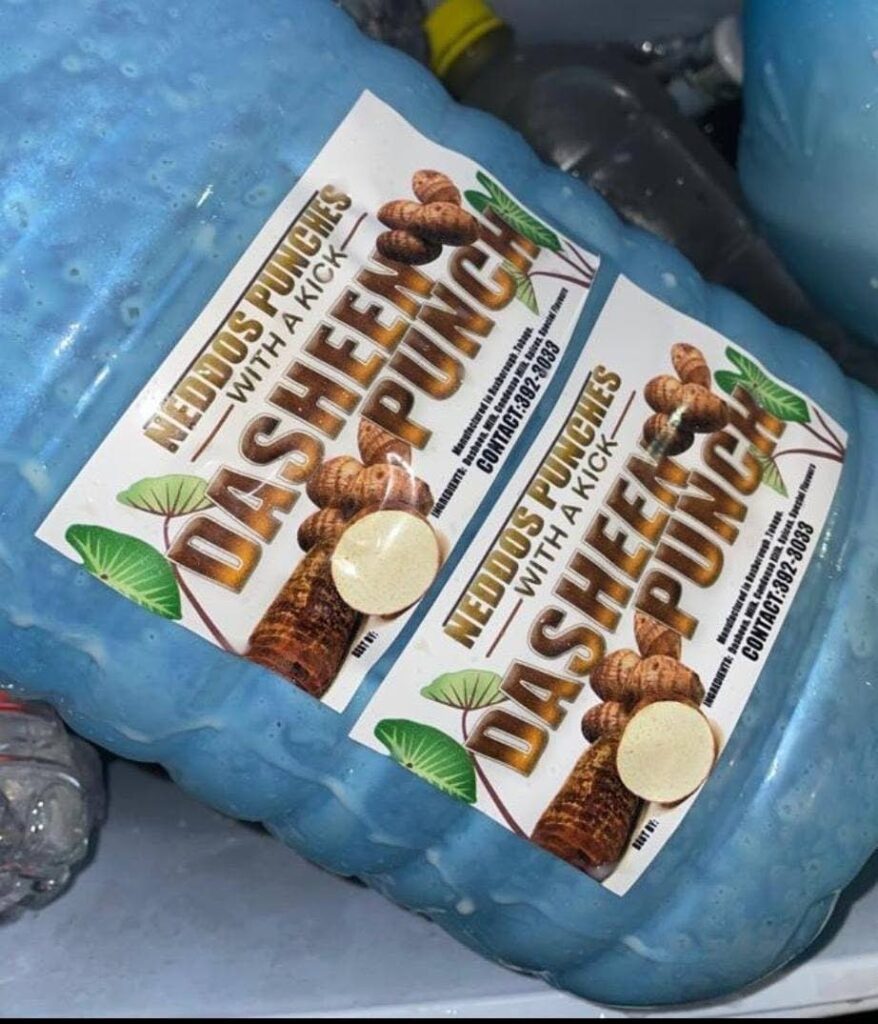
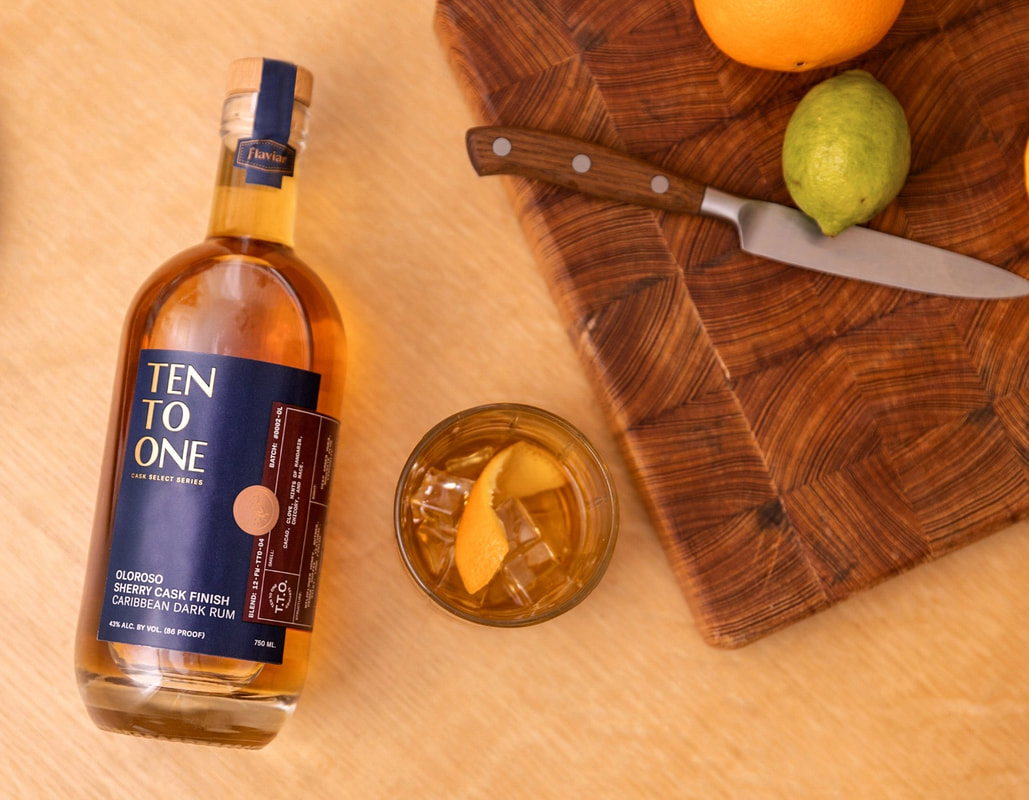









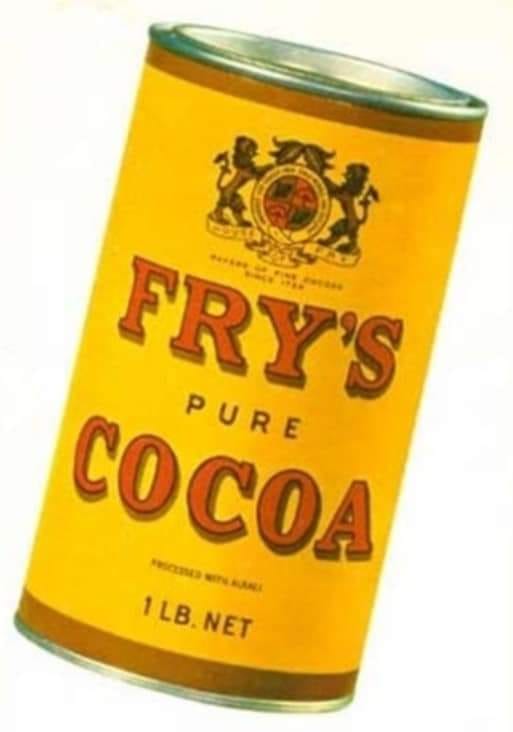
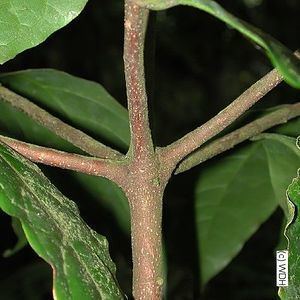
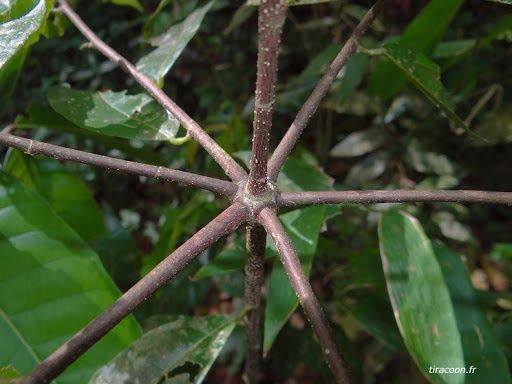


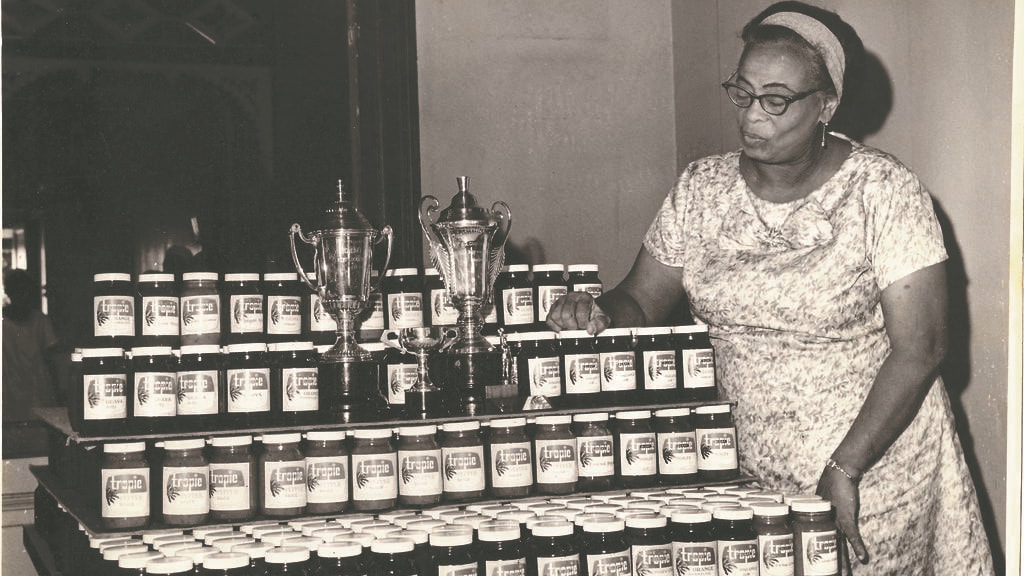



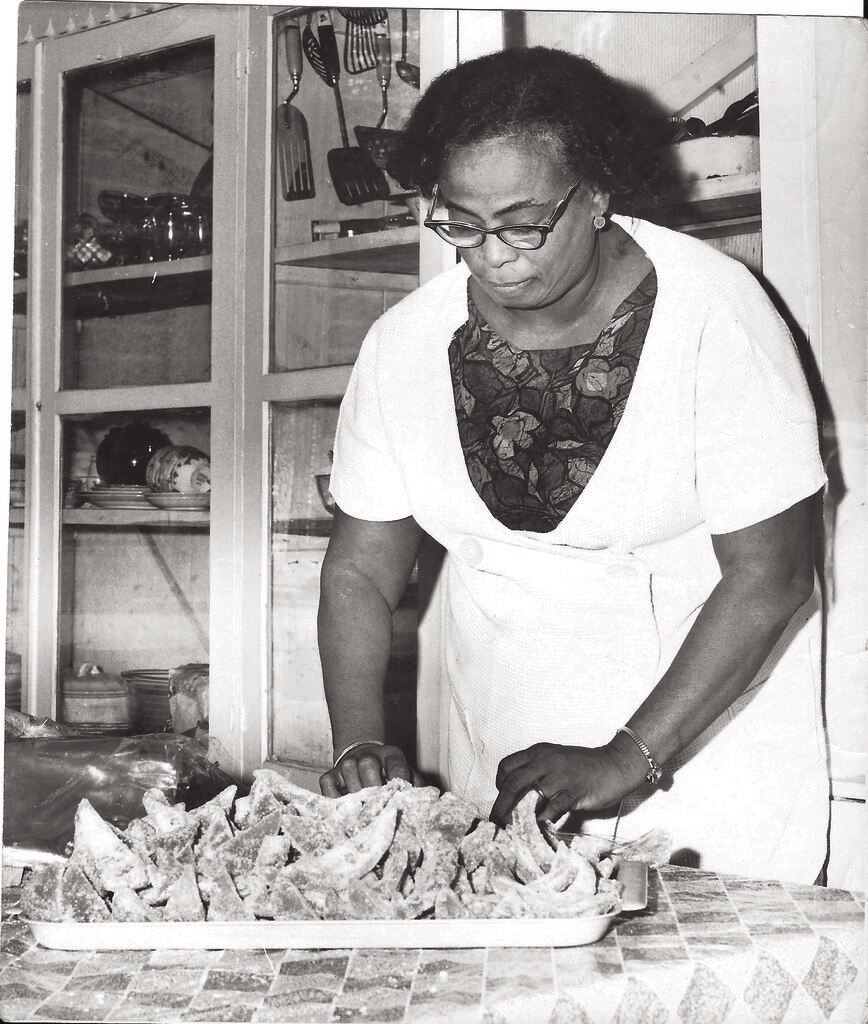

 RSS Feed
RSS Feed